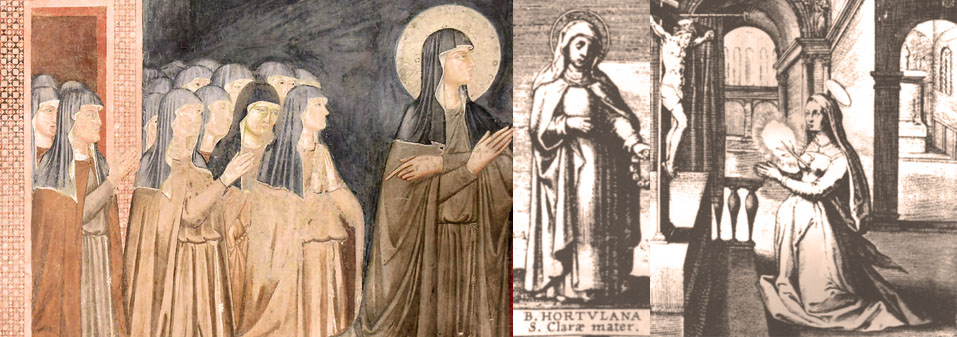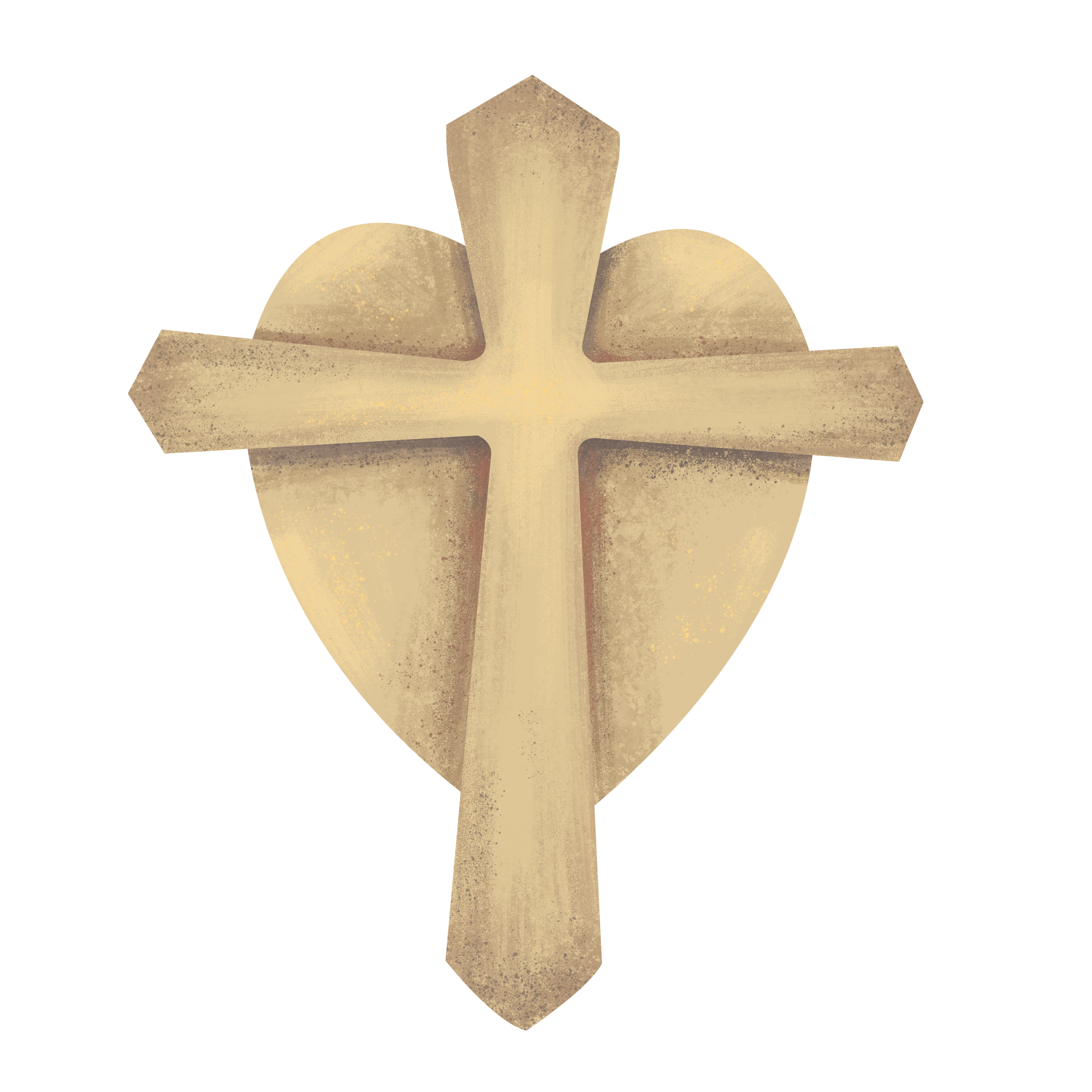
27 Jan Ven. Ortolana of Assisi
Ven. Ortolana of Assisi
Died: c. 1238, Assisi, Italy
Known For: being the mother of St. Clare, who started our Order
Fun Fact: Once a sick boy was brought to St. Clare and Ortolana’s monastery in hopes of a cure. The boy became well, and Clare said it was because of Ortolana’s prayers. But Ortolana insisted that it was because of Clare’s prayers! To this day no one knows who obtained the grace (although they could have both done so), but both women led extraordinary prayer lives.
“Is that a saint’s name?” Parents who’ve given their child an unusual name are often met with this rather skeptical question. But sometimes their children become saints themselves, and so the question can be answered positively!
Ven. Ortolana of Assisi could say this. Not only are two of her children canonized and one blessed, but she named the most famous of the three something as unique as it is striking: Chiara, or Clara, meaning light (Clare in English). Although popular today, this name was unheard-of in 12th century Italy.
Married to the illustrious Count Favarone, Ortolana mothered five children: Don Boso, Penenda, (Bl.) Beatrice, (St.) Agnes, and (St.) Clare. Childbirth, in Medieval times posed many hazards, so the pious Ortolana spent much time praying for a successful and safe delivery. The Legend of St. Clare says that while she did so:
She heard a voice saying to her (Acts 9:4): “Do not be afraid, woman, for you will give birth in safety to a light which will give light more clearly than light itself.” Taught by this oracle, when the child was born [and then] reborn in sacred Baptism, she ordered that she be called Clare, hoping that the brightness of the promised light would in some way be fulfilled according to the divine pleasure.
Saints are often made by the people who surround them, and this was certainly true in Clare’s case. She and her mother seemed to have had a good relationship. As a result, she learned to practice prayer and service to the poor from her. We don’t know Ortolana’s reaction when Clare escaped from home to join St. Francis’ Order, but surely the seeming betrayal of her daughter would have struck the benevolent woman’s heart deeply.
Ortolana had traveled far – she’d gone on pilgrimage to the Holy Land, and the trip would have been every bit as dangerous as the place itself. She was used to luxury and ruling a household. It’s inspiring, then, that after her husband’s death she knocked on the door of the San Damiano monastery and became a spiritual daughter of her biological daughter, Clare.
Yes, for every saint there are many unsung saintly souls. Although her cause for canonization has been opened, Ven. Ortolana is certainly one of them. Not much is recorded of her life and the glories of her children overshadow her own. But Ortolana, whose name means “gardener,” is remembered for the “garden of delights” (Song of Solomon) she grew for Jesus: her saintly children, and the many hidden sacrifices she offered to Jesus before and after entering the monastery, where she died around 1228.
Sources:
The Princess of Poverty by Fr. Marianus Fiege, O.F.M. Cap. Published by the Poor Clares of Evansville, IN, 1909.
Clare of Assisi: Early Documents, edited and translate by Regis J. Armstrong, O.F.M. Cap. Published by Paulist Press, 1988.
Clare of Assisi by Marco Bartoli. Published by Franciscan Press, 1993.
Poor Sisters of St. Clare: An Anthology by Sr. Mary Francis Hone, O.S.C. Published by the Holy Name Federation of Poor Clares, 2019.
St. Clare and Her Order by Anonymous. Published by Mills and Boon, Limited, 1912.

